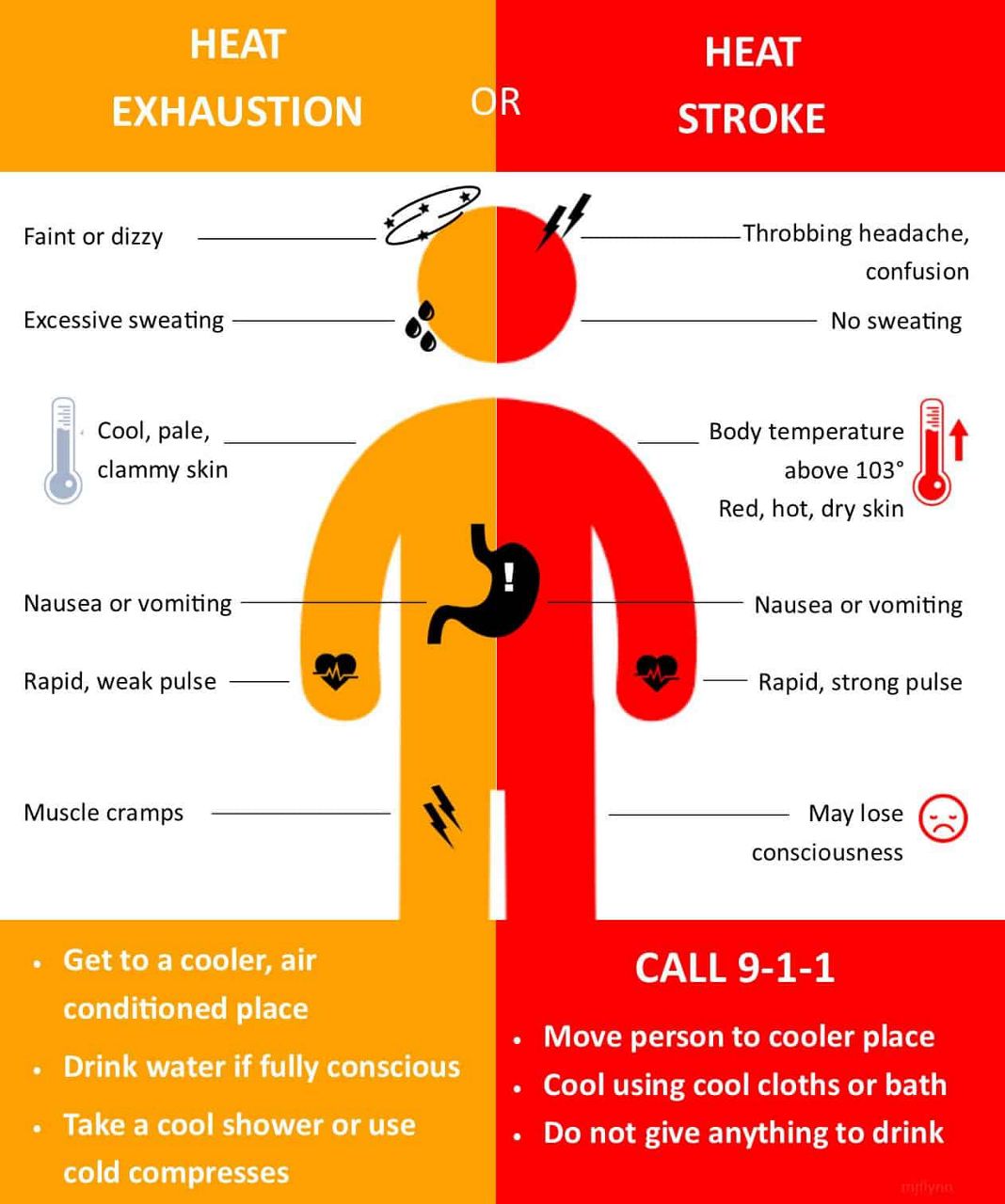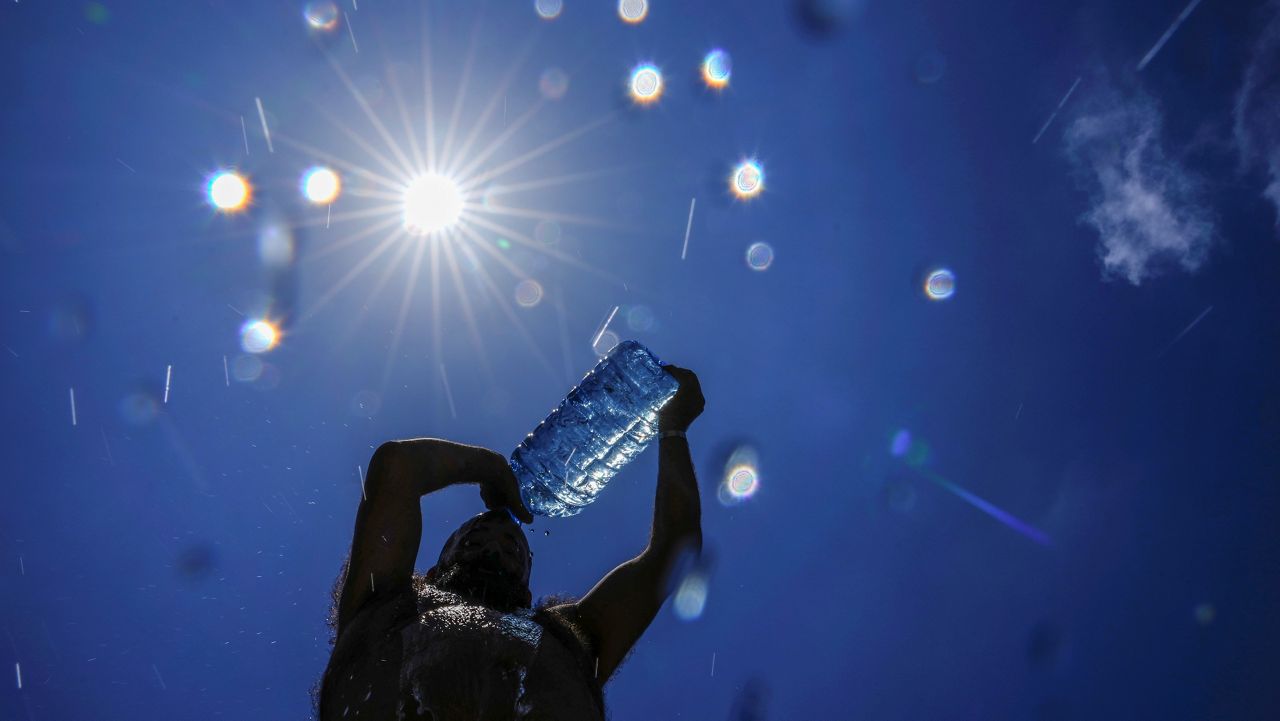OHIO — Another week of extreme heat has begun.
Ohio and many other areas are facing intense heat this week to round out August, with highs reaching the 90s.
“High temperatures pose the threat of heat-related illnesses for all people, but some are more at risk than others,” said Ohio Department of Health Director Dr. Bruce Vanderhoff in a press release. “It’s critical we remain vigilant and follow some simple precautions to get through it without incident, injury, or illness.”
With extreme heat could bring heat illness, which includes heat rash, heat cramps, heat exhaustion or heat stroke, according to the Cleveland Clinic. Heat illnesses can range from mild to severe, and heat stroke can be deadly.
Vanderhoff said high-risk groups include infants, young children, and older adults, as well as people with mental illness and chronic medical conditions such as heart disease, obesity, and poor blood circulation.
The Centers for Disease Control and Prevention states that on average, more than 1,200 people die nationwide from heat-related causes every year.
It's important to monitor your body for symptoms of heat illness during the summer, Vanderhoff said.
Below are the signs for heat exhaustion and heat stroke:

Heat rash, which is also called prickly heat or miliaria, is a stinging skin irritation that turns your skin red. Heat cramps are pretty much the same as regular cramps, but are caused by the heat.
There are many factors that can lead to a heat illness, including:
- Dehydration
- Obesity and/or poor physical fitness
- Certain prescription medications — tranquilizers, water pills, antihistamines, beta blockers, laxatives and drugs used to treat mental illnesses or Parkinson’s disease
- Using illegal drugs or alcohol
- Lack of experience working in heat, working outdoors or doing heavy work. You may need to take breaks and spend some time in the shade
- Illness, specifically medical conditions such as diabetes, kidney problems and heart problems. Also pregnancy, and symptoms like high blood pressure and fever
- Heavy, dark or light clothing. If you must wear heavy equipment and clothing like sports padding and helmets, police and fire uniforms and industrial protective equipment, you’re in danger of developing a heat illness
- Age — if your child is four years old or younger, or you’re 65 or older, you’re at a higher risk; infants and young children commonly get heat rash
- Gender, as males are more likely to get a heat illness than females
- Prior history of heat-related illnesses
The Cleveland Clinic gave ways to treat heat illnesses:
Heat rash:
- Go somewhere cool – inside and air-conditioned
- Gently dry off your skin
- Put cold compresses on your skin
- Don’t use any products that could block your pores, which includes baby powder, creams and ointments
- See your health care provider if the symptoms don’t improve
Heat cramps:
- Drink water
- Rest
Heat exhaustion:
- Get to a cool, shaded area or go indoors
- Drink cold water with small sips
- Put cold cloths on your skin
- Spray yourself with mist and stand near a fan
- Go to the emergency department or call 911
Heat stroke
- Get out of the hot area
- Immediately go to the emergency department or call 911
- Get treatment within 30 minutes of symptoms
- Start to cool down by spraying yourself with water or applying cool compresses
- Loosen or remove your clothing
- Elevate your feet
- Don’t drink any fluids
To prevent any of these conditions, the No. 1 way is to stay hydrated. It's recommended to drink water every 15 minutes when working or exercising in a hot environment, even if you're not thirsty. For those who must be out in extreme heat, which is a heat index of over 103 degrees, it's recommended to drink a total of two to four glasses (16 to 32 ounces) of water each hour.
Other prevention tips include avoiding alcohol and caffeine, taking frequent breaks, wearing sunscreen, avoid eating hot and heavy meals, and wear loose, lightweight clothing.



